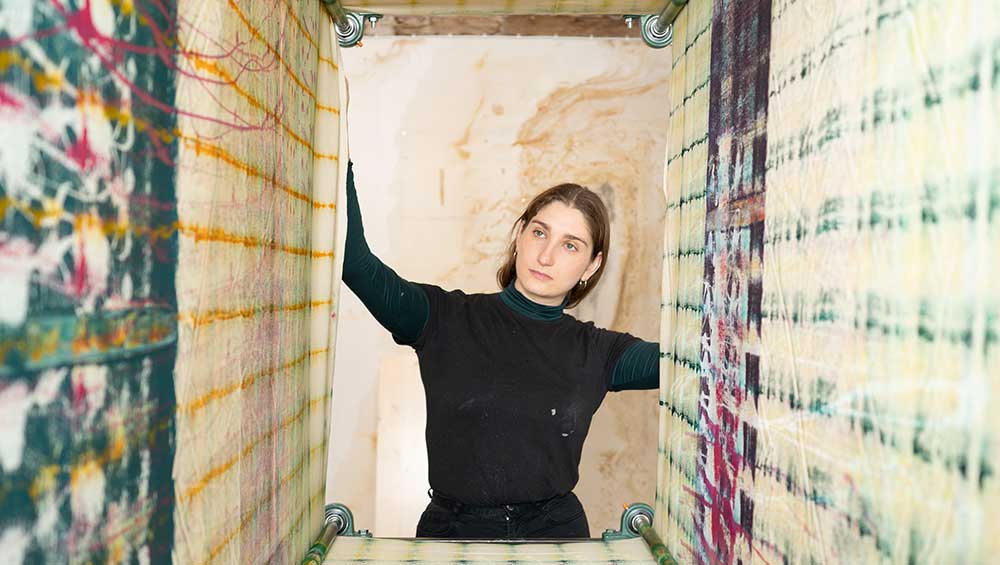
Emily Kraus. Courtesy of the Artist.
The Sunday Painter, London
27 April – 10 June 2023
by SAM CORNISH
At the Sunday Painter, Emily Kraus (b1995) is showing five original and confident paintings, all made this year. Upstairs are two works from her Stochastic series, begun in 2022, while studying at the Royal College of Art (RCA). Downstairs is a trio from her more recent Nest Time series, each approaching four metres high and hung to form a triptych, that both envelopes and towers over the viewer. They are at once meditative and dramatic, weaving together gesture, pattern and colour into complex, multilayered wholes. Seen on a screen, Kraus’s paintings appear explicitly digital, as if a modernist abstraction had been glitched by a rudimentary piece of software. In the flesh, this reference falls away. They are vivid, textured, physical things, even if their vividness and their physicality contain within it something wonderfully elusive and transitory.
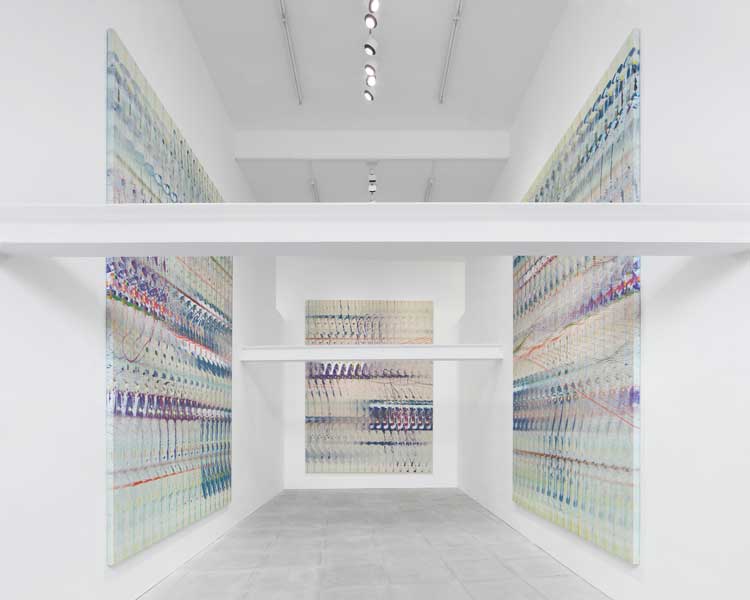
Emily Kraus: Nest Time, installation view, The Sunday Painter, London, 2023. Photo: Ollie Hammick.
The method behind the paintings is unusual. With limited studio space at the RCA, Kraus constructed a cage-like frame in which to paint, the struts of which work as rollers, around which she looped a long stretch of canvas. She works within this frame, surrounded on all four sides by the canvas, and applying paint to the rollers and the canvas itself. Pulling the canvas through the frame causes the paint to smear, and then to impress itself on the canvas in repeated but constantly varied patterns, gradually allowing her to build the paintings’ distinctive repetitive layers. The process combines the directness of painting with the indirectness of print-making, and this ambiguity seems to feed through many aspects of the images.
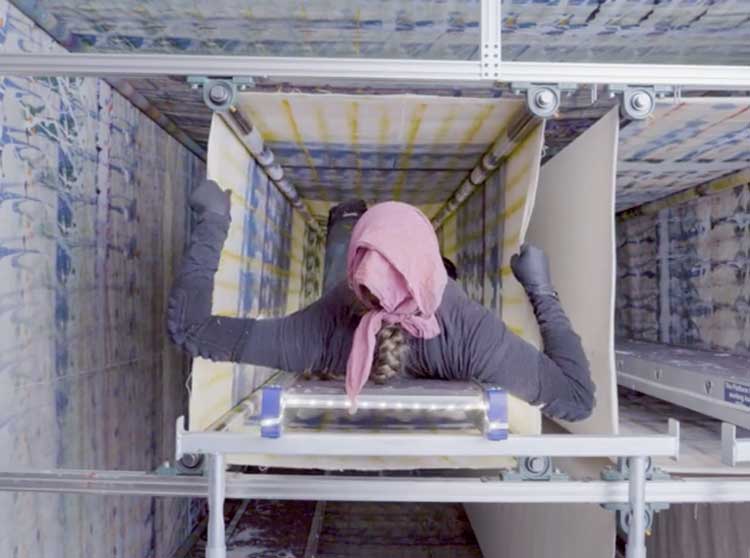
Kraus inside the painting apparatus she invented. Courtesy of the Artist.
The dynamism of the resulting paintings belies their contrived, if undeniably intriguing, process of making. The paintings stand as independent objects, rich images. Fully realised gestural painting is never just an accretion of actions, but becomes more than the sum of its parts by actively creating a convincing space – or convincing spaces – for gesture to exist in. Painting as a time-based activity becomes a painting, a stilled, permanent image. The assertion of stillness perhaps becomes even more important when, as with Kraus’s, the image vibrates and fluctuates, grows and recedes, and contains within it multiple echoes of itself. The fragmentary spaces in Kraus’s paintings filter through each other, coalescing around configurations of marks, sometimes in minute areas, sometimes distributed across the height or breadth of the image. The paintings have an affinity to music, or to sound more generally (the catalogue essay mentions Philip Glass). To me, they seem to parallel the way sounds help to create our sense of space, their arrival, continuity and disappearance articulating background and foreground, location, distance, direction and volume.

Emily Kraus. Stochastic 10, 2022. Oil on canvas, 170 x 300 cm. Photo: Ollie Hammick.
The vertical striations caused by periodically yanking the canvas through her painting frame have the effect of visually pulling the image tightly across the surface, mirroring and reasserting the physical tautness of the canvas itself. The regulatory power of the grid, loved by many modern and pre-modern painters, is combined, in a highly inventive way, with a more fluid and improvised sense of order. There is a great sensitivity to the materiality of colour, from granular flecks of paint just gripping the surface canvas, right up to the liquid spurts that dance and fall across the image as a whole, especially apparent in the verticals of the Nest Time paintings.
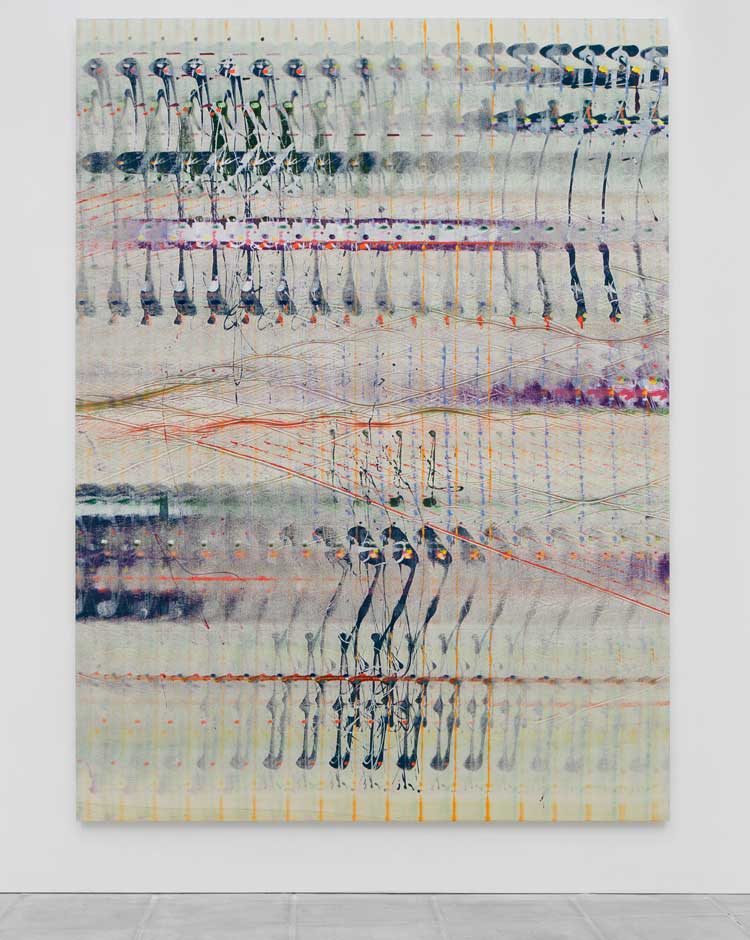
Emily Kraus. Nest Time 3, 2023. Oil on canvas, 380 x 280 cm. Photo: Ollie Hammick.
There are many modernist painters who worked by imposing a limited process on their paintings. We could mention Morris Louis, Jack Whitten, Simon Hantai or, indebted to classic modernism, even as he distances himself from it, Gerhard Richter. But the example of Helen Frankenthaler seems just as relevant to Kraus. Frankenthaler is an artist primarily associated with painterly freedom and impetuosity, although this “popular” image fails to appreciate the rigour and discipline underpinning her art. Frankenthaler has been very visible in London in recent years. Her impact can be felt in Kraus’s colour, in the softness Kraus finds within the drum-like tightness of her paintings’ surfaces, in the impression that her images hover within the weave of the canvas, and in her creation of spatial expansiveness through exquisitely realised sequences of dot, line and fluidly spreading plane. Perhaps we could say that Kraus inverts the relation of discipline and freedom in Frankenthaler’s art, placing discipline rather than freedom in the foreground. This is, of course, a very big claim for an artist only at the beginning of her career.
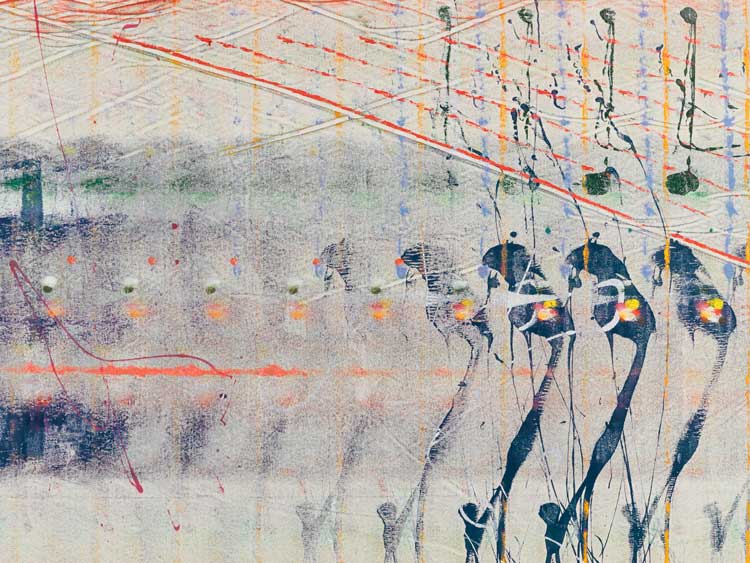
Emily Kraus. Nest Time 2, 2023 (detail). Oil on canvas, 380 x 280 cm. Photo: Ollie Hammick.
There is a revival in interest in abstract painting among younger painters. The seemingly limitless hunger of the market plays a part, with its cyclical search for novelty and decoration. But this should not detract from the seriousness and real artistic ambition of many of the artists involved. Alongside Kraus, I have been struck and convinced by the work of Harminder Judge and Pam Evelyn, two artists also recently launched from postgraduate courses in London, Evelyn like Kraus from the RCA, and Judge from the Royal Academy Schools. The challenge of early market-success for a young painter is the demand that they quickly settle on a signature approach, recognisable and repeatable, and then produce it in quantity to satisfy a global audience eager to buy into early success, but uninterested in the deviations and possible dead-ends that are surely vital to any young artist. This is not new. It was likely with one eye on the market that Clement Greenberg asked John Hoyland “why he produced more than one image” (the answer: “I have more than one idea”), but undeniably the pressures of money are more intense, and the short-term financial rewards greater, than they were way back in the 1960s. The success of Kraus’s process, its variety and potential for extension, perhaps lays a trap in the current environment, one I hope she can navigate.
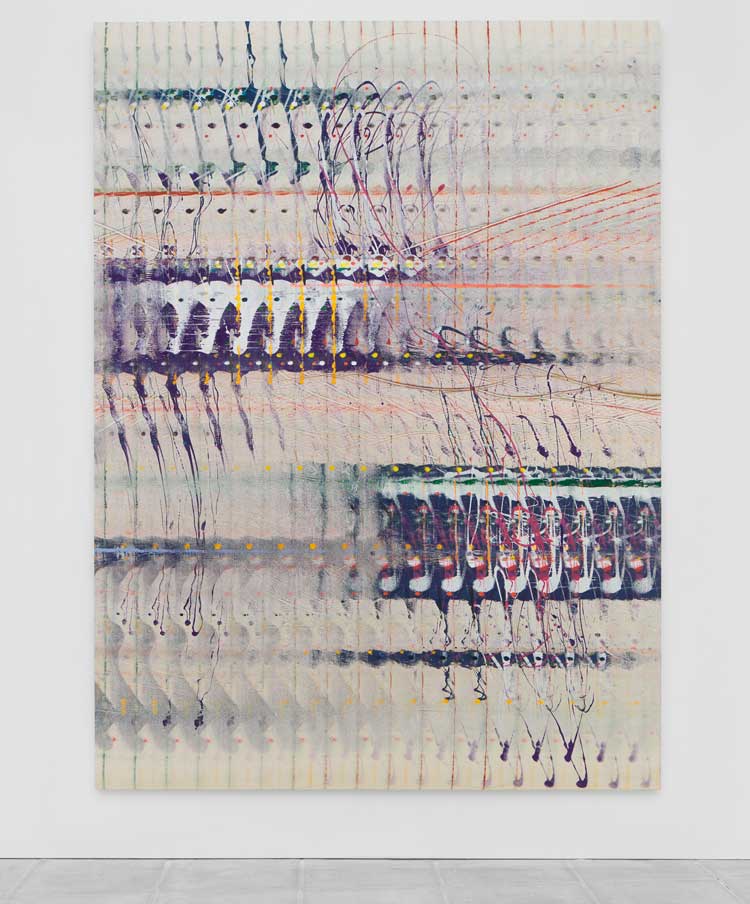
Emily Kraus. Nest Time 2, 2023. Oil on canvas, 380 x 280 cm. Photo: Ollie Hammick.